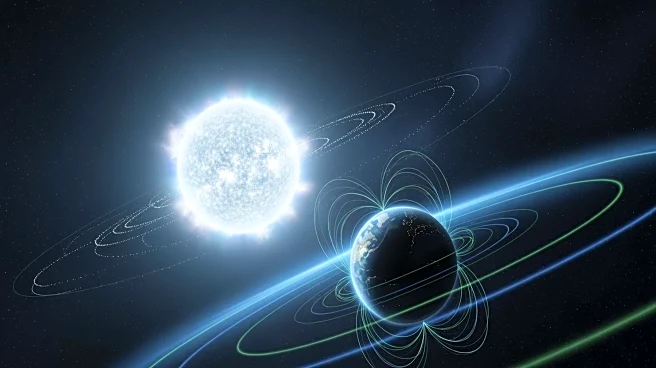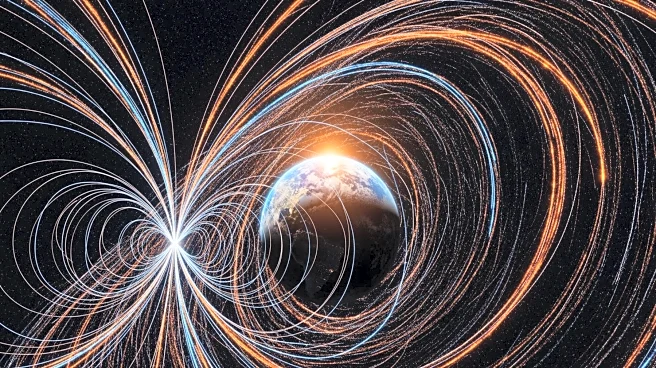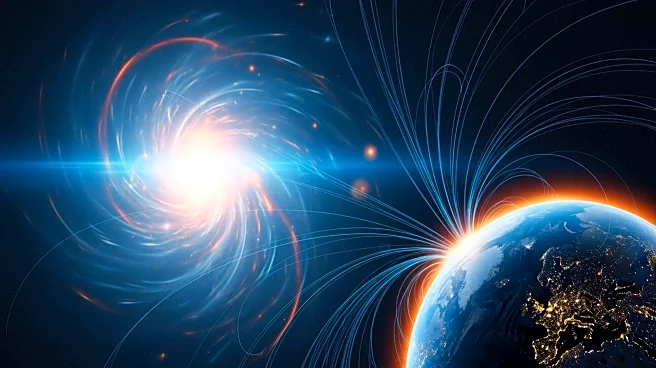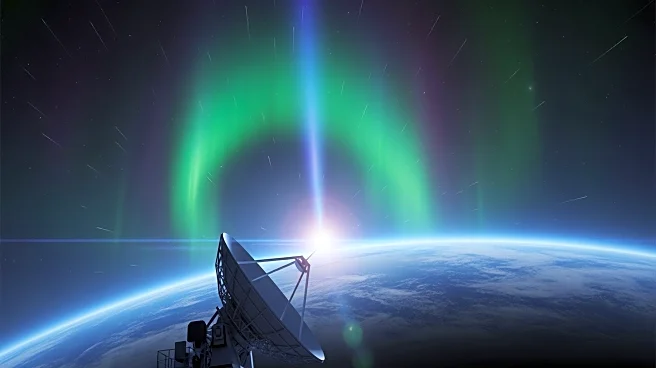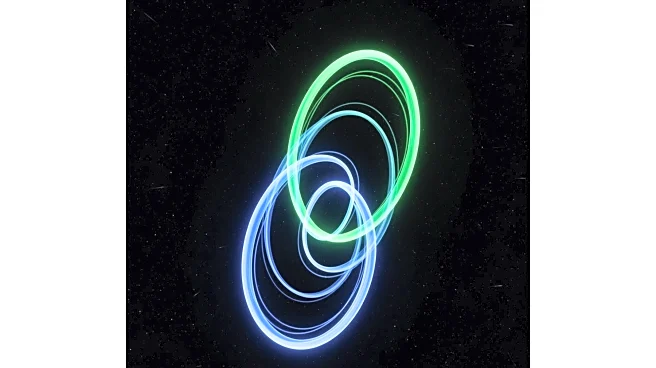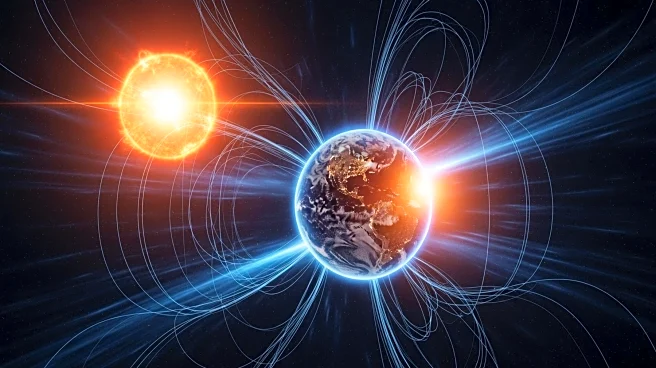What's Happening?
On November 20, a stealth solar storm reached Earth, catching scientists off guard due to its lack of visible warning signs. Unlike typical coronal mass ejections (CMEs), stealth solar storms emerge quietly
from the Sun, leaving minimal traces in solar images. This event did not trigger a geomagnetic storm but may have contributed to auroras in mid-latitude regions. NOAA experts detected unusual solar wind patterns and a sudden increase in the magnetic field, indicating the presence of a stealth CME. These storms are more common during the Sun's waning phase of its 11-year cycle, when magnetic activity changes.
Why It's Important?
The occurrence of stealth solar storms highlights the unpredictability of solar activity and its potential impact on Earth's space environment. While the November 20 storm did not pose a major threat, it serves as a reminder of the challenges in forecasting solar events. Understanding stealth CMEs is crucial for improving space weather predictions and mitigating risks to satellites, communication systems, and power grids. The event underscores the need for continued research into solar phenomena and their effects on Earth.
What's Next?
Scientists are likely to focus on improving detection methods for stealth CMEs, using advanced solar observation technologies. Research may explore the conditions that lead to stealth solar storms and their potential to cause geomagnetic disturbances. Efforts to enhance space weather forecasting could involve collaboration between international space agencies and research institutions. Monitoring the Sun's activity during its solar cycle will remain a priority to anticipate future stealth events.
Beyond the Headlines
The stealth solar storm event raises questions about the limitations of current solar observation techniques and the need for innovation in space weather monitoring. It also highlights the importance of international cooperation in sharing data and resources to better understand and respond to solar phenomena. The event may prompt discussions on the resilience of infrastructure and technology against unexpected space weather impacts.


